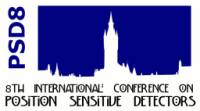Speaker
Mr
Anton Khaplanov
Description
Novel techniques of gamma-ray tracking and imaging are employed for the new generation of nuclear gamma-ray spectrometers. As a prominent example of this approach the advanced gamma tracking array AGATA will soon start operating in its prototype version. Another large gamma-tracking array is currently being designed for the needs of the DESPEC NUSTAR collaboration. It should cover all types of decay studies with implanted radioactive beams. In order to push the limits of the gamma-ray spectroscopy to the domain of the exotic nuclei close to the borderlines of stability, low count rates and high backgrounds should be considered. For this purpose a new gamma-ray tracking algorithm TANGO was developed featuring identification of the photon escape events which allows achieving high Peak/Total values. Imaging capabilities of the array will be exploited in order to correlate the decay photons with the implantation positions, thus allowing photon tagging, and ambient gamma-ray background suppression. Segmented HPGe planar and coaxial detectors are considered for the physical realization of the array. A comprehensive analysis of the tracking and background suppression capabilities will be presented along with a comparison between different proposed configurations.
Author
Dr
Stanislav Tashenov
(KTH, Royal institute of technology)

